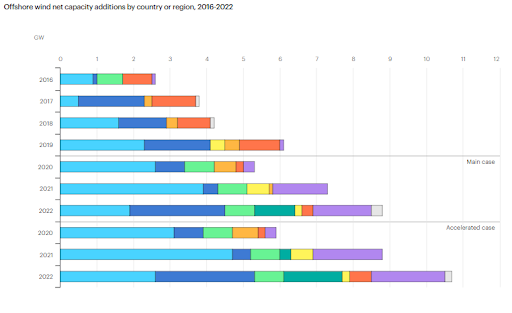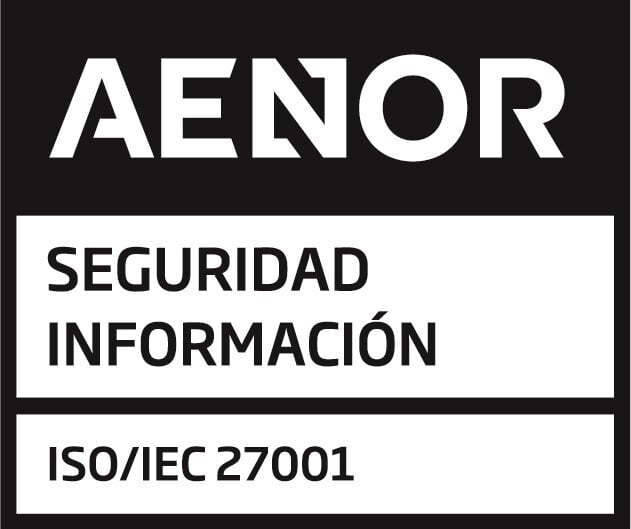The International Energy Agency (IEA) recently released data that shows the increasing impact of offshore wind farms on a global scale. The agency expects this pattern to continue, at least for the next two years. In the United States alone, a massive offshore wind installation will power at least 10 million homes! Because of investments such as this, the focus on wind farm management systems has increased.
As the wind market matures, operators and owners are progressively looking to increase their revenues by managing their renewable portfolios better. Wind farms have many advantages and benefits, especially when management is through tested wind asset management platforms such as QBI Solutions.
Wind Farms Trending
Globally, there are now more than 350,000 wind turbines. China’s Gansu Wind Farm leads the pack with 20GW installed capacity. There are many other sizeable wind farms across the globe, including the Alta Wind Energy Center in the United States and the Walney Extension Offshore in the United Kingdom.
The forecast captured in the graph below shows the significant growth of offshore wind farm capacity since 2016.

Offshore wind net capacity additions by country or region, 2016-2022 (source: International Energy Agency)
Offshore wind farm technology has remarkable potential. Recent research revealed that offshore wind production could hit 120,000GW in two decades. The positive impact on the job market is significant. A report by the Global Wind Energy Council (GWEC) claims that offshore wind projects could generate 900,000 jobs over the next decade.
Traditional vs. Offshore Wind Farms
In the United States and Europe, wind reigns supreme over the other renewable sources. However, the road seems rough for onshore wind farms owing to the rising public opposition and land constraints. On the contrary, offshore wind farm management systems are less concerning because the installations are located far away from the coast. On top of that, the vast waters give the large potential for solar PV and wind farms installations.
A noticeable benefit of offshore wind farms is that the wind turbines typically generate more electricity there. The wind is more consistent and powerful offshore than onshore. Picture this: the largest wind turbine onshore can power up to 5MW, while offshore turbines can give as much as 15 MW.
Theoretically, offshore wind power is so massive that it could support all the power needs of humanity. Researchers at the Carnegie Institution for Science found out that wind farms located within the North Atlantic would be enough to supply electricity to the world.
Comparison with Solar Farms
Solar and wind have continued to increase their contribution in the electrical generation in the United States. A recent report by the US Energy Information Administration (EIA) showed that the combination of wind and solar grew by 13.6%.
Experts have argued that installing solar and wind farms together can be beneficial because it levels out the power supply and minimizes grid costs. But when would wind be a better option? As long as the wind turbine is placed in an obstacle-free path in a windy area, then it can be more effective than solar- it is independent of sunlight.
The Next Frontier for Wind Farm Management
There is a lot of potential in wind farms, with the growing markets like the US and China expected to develop more offshore farms. Emerging markets in South America and Asia will most likely accelerate their investments in this area.
Like for any other investment boom, the emerging wind farms will create substantial job opportunities. The American Wind Energy Association estimates the creation of close to 100,000 jobs and an annual economic output of $25 million by 2030.
Effective Wind Farm Management Systems
A careful approach is necessary for the economic success and optimal energy yields of both solar and wind farms. Regular reporting is one of the most effective strategies, as it ensures that the owner/operator is updated on plant conditions and energy yields.
All indications are that wind farm management is growing bigger and better, as wind becomes a recognized component of the electricity mix. Wind power must avail itself as a typical power plant – applying familiar protocols and language. For the wind farm operator or owner, it is crucial to understand the assets, track performance, and plan for maintenance for not only optimal performance but also adherence to grid requirements.
QBI Solutions has advanced wind farm management tools to help you overcome these challenges. Committed 100%, we approach these requirements from the wind farm owner’s perspective. We have unmatched experience in the management of renewable portfolios.
Here’s how wind farm management systems and services based on the QBI platform adds value to your business:
- Data integration for a centralized data warehouse
- Collaboration among all stakeholders for smooth flow of information
- One single source of truth since all information and communications are centralized
- Manages different technologies concurrently- can accommodate solar farms and wind farms
- Complete control over project resources and processes
Contact us for a demo of this platform that is already managing over 800 renewable projects.
